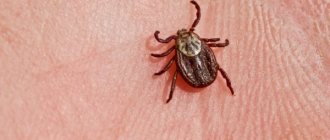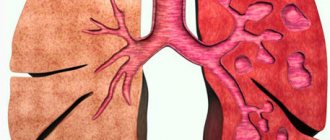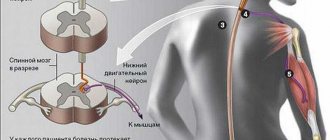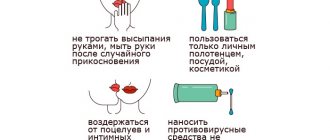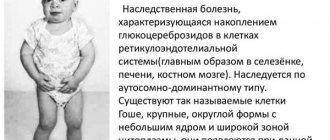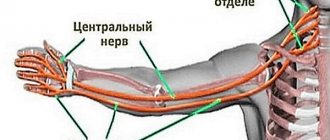Urolithiasis disease
Urolithiasis: treatment and its methods
There are a number of methods for treating this disease.
The choice of technique depends on the location and nature of pathological disorders in the urinary tract. Regardless of the method chosen, there are a number of general principles for treating patients with this disease. All methods are aimed at eliminating the cause of the pathology, namely, removing stones from the kidney or urinary tract. The most commonly used method is surgical removal of stones. In some cases, when the stones are soft, they can be dissolved and removed from the human body without resorting to surgery.
Even surgery for urolithiasis does not exclude the occurrence of relapses of the disease. After the operation, the patient must undergo periodic preventive examination by a urologist, follow the principles of dietary nutrition, undergo sanatorium treatment, physiotherapeutic procedures, etc.
The choice of treatment tactics largely depends on how the patient’s kidneys function. If renal function is preserved by 80% or more, then conservative therapy is considered possible. In cases where kidney function is significantly reduced, extracorporeal lithotripsy or surgical removal of stones is resorted to.
Conservative therapy for urolithiasis
Diet therapy
Diet plays an important role in the treatment of urolithiasis. Proper nutrition not only helps remove existing stones, but also prevents the formation of new ones. The basic principle of healthy eating is limiting the amount of food consumed and increasing the number of meals.
The diet should be varied. You just have to exclude some foods that provoke the formation of stones. The chemical composition of stones is of great importance.
If the stones have a calcium oxalate composition, then dairy products (milk, cheese, cottage cheese, sour cream, etc.), drinks containing antioxidants (strong tea, coffee, etc.), as well as foods with high acid content (citrus fruits, sorrel, spinach, black currants, strawberries, etc.). The consumption of legumes and nuts is not recommended.
If the stones are urate, then the intake of protein foods, spicy and fatty, salty and smoked foods is limited. In the evening, it is not recommended to eat meat and offal.
If stones in urolithiasis are of phosphorus-calcium origin, then you should not eat feta cheese, cottage cheese, milk, cheese, mineral waters with a high alkali content, potatoes, hot and spicy dishes, green vegetables and herbs, berries, legumes and pumpkin. The diet includes foods high in carbohydrates and proteins, namely: cereals and flour products, meat, lard, vegetable fats. Useful in this case are pears and apples, sauerkraut, kefir, red currants and grapes.
An important point is to maintain an optimal level of acid-base balance. Some foods can make the environment more alkaline (dairy products and plant foods), while others, on the contrary, make it more acidic (meat, fish, eggs, etc.).
You need to drink enough fluid and control the daily volume of urine excreted, which should be at least one and a half liters. If the stones are small in size, then the “water impact” technique can be used. The essence of the method is that the patient drinks on an empty stomach a large amount of water (0.5-1 l) at room temperature or any other liquid (uzvar, herbal tea, milk tea, etc.). This method is effective for flushing the kidney cavity.
Herbal medicine for urolithiasis
Treatment with medicinal herbs is recognized by traditional medicine as very effective, but before taking any infusions and decoctions of medicinal herbs, you should definitely consult with your doctor. There are conditions in which herbal medicine is contraindicated.
In order to facilitate the release of stones or sand after stone-breaking activities, you should take one glass of bear ears decoction after each urination. To prepare the decoction, the dry substance (one tablespoon) is poured with one glass of boiling water.
Madder extract helps remove phosphalates and oxalates from the body. You can purchase ready-made tablets at the pharmacy or prepare your own powder from the root of this plant. To do this, you need to take dried madder root, chop it and grind it in a coffee grinder. The resulting powder is taken 1-5 grams three times a day after meals.
Today, the pharmacological market offers a wide range of drugs based on natural raw materials. These include ready-made collections of medicinal herbs, tablets, syrups, infusions, etc. Urologists often prescribe drugs to their patients such as: “Avisan”, “Fitolot”, “Cyston”, “Fitolysin”, “Uroflux”, etc. It should be understood that these drugs are not capable of crushing stones, but only help the body get rid of their breakdown products. You should take such medications only as prescribed by a doctor and under his constant supervision.
With concomitant inflammation of the urinary tract, antibacterial therapy should be taken. Herbal teas based on chamomile, calendula, oak bark, etc. have a good anti-inflammatory effect. Usually the inflammation goes away after it is possible to get rid of its root cause - stones in the kidneys and urinary system.
Normalization of metabolic processes in urolithiasis
In order to avoid relapse of the disease, they take various drugs that normalize metabolic processes. For this purpose, special corrective therapy is used, aimed at normalizing the acid-base balance of urine. To regulate oxalate metabolism, vitamin therapy (B1 and B6) is used, and if the stones are oxalates, then magnesium oxide is indicated. It is important to use antioxidants, drugs containing potassium (with an increase in the level of calcium in the urine), etc. The duration of the course of treatment and the choice of drugs are purely individual. Only a doctor can consider it appropriate to take medications and prescribe treatment.
Therapy of urolithiasis in the presence of kidney stones
If the patient's stones tend to pass out on their own in the urine, the doctor may decide on a wait-and-see approach. In this case, drugs are prescribed that have pronounced antispasmodic, bacteriostatic and sedative properties.
For renal colic, the patient is advised to take warm baths in combination with combined painkillers, which can simultaneously relieve pain and relieve spasms.
Surgical treatment of urolithiasis
If conservative therapy does not bring the desired results, the patient experiences severe pain and attacks of pyelonephritis, hematuria is observed and other threatening conditions arise, then surgical removal of stones is indicated.
- Open surgical interventions for urolithiasis.
This operation is relevant in the presence of stones in the pyelocaliceal system, in case of large stones localized in the kidney with the addition of pus formation. Today, surgical intervention is used less and less, but there are situations when surgery cannot be avoided. There are several methods of open surgery: pyelolithotomy, nephrolithotomy and ureterolithotomy.
- X-ray operations. The intervention is carried out using the introduction of a cytoscope. Small stones are removed without crushing, large stones are first crushed and then their parts are removed. The destruction of stones is possible using laser, ultrasound or electro-hydraulics. A contraindication to such treatment may be prostate adenoma or diseases that make it impossible to correctly position the patient on the operating table. Percutaneous lithoextraction may be used.
- Shock wave lithotripsy is the least traumatic method of surgical stone extraction. Crushing occurs using electro-hydraulic waves. After crushing, the remaining stones are released in the urine, which can provoke a mild attack of renal colic. Contraindications to such a procedure are pregnancy, cardiopulmonary insufficiency, bleeding disorders, excess body weight of the patient, etc.
Urolithiasis, the symptoms and treatment of which are varied, tends to return again and again, even after several years. For this reason, patients are monitored by a urologist and must constantly follow a dietary regimen and periodically undergo preventive courses of treatment. In this case, it is possible to avoid relapses of the disease.
General information
Urolithiasis (other names: nephrolithiasis , kidney stones , urolithiasis ) is a disease during which stones form in a person’s kidneys or other organs of the urinary system. Symptoms of urolithiasis can first appear in a person at almost any age. As diagnostics indicate, the disease can develop in both newborns and the elderly. But depending on the age of the sick person, the type of stone differs. Thus, in older patients, uric acid stones . At the same time, protein stones are found much less frequently in patients who require treatment for urolithiasis. Most often, with urolithiasis, stones with a mixed composition are formed. The size of the stones may vary. So, if we are talking about stones up to 3 mm in diameter, then it is not stones that are determined, but sand in the kidneys. Sometimes large stones can reach up to 15 cm. There are also descriptions of cases where stones weighed more than 1 kg.
What precautions should be taken when treating children?
Unfortunately, young immunity also cannot always cope with the development of ICD. Urolithiasis in children should be treated immediately, first with medication. But in childhood there is an intensive development of all organs, and therefore some kind of medicinal effect must be used extremely carefully. Otherwise, you can cause irreparable harm to the future development of the child.
Therefore, you should strictly adhere to the course prescribed by a specialist. In children, the treatment course must include a variety of therapy, and must also include drugs that correct the effect of the specific intended drug on other organs.
Diet
Diet is the basis of treatment not only for urolithiasis, but also for other diseases. Here are some basic principles:
- Diet variety (while the total amount of food consumed is reduced).
- Exclusion from the diet of foods that contain large amounts of stone-forming substances.
- Drink plenty of fluids (2-2.5 liters per day).
Regarding foods that need to be excluded from the diet, it all depends on the chemical composition of the stones. Naturally, alcohol, fatty and spicy foods will have to be excluded in any case, but there are foods whose intake will also have to be limited.
For example, with phosphorus-calcium stones, milk, alkaline mineral waters, and spices are excluded. It is better to limit the consumption of potatoes, cheese, legumes and green vegetables.
Reasons for the passage of stones
The reasons for the formation of kidney stones are well known - they are associated with metabolic disorders and the formation of clots of poorly soluble salts. The passage of a stone provokes:
- mechanical pressure from neighboring organs (tumor of the kidney, ureter);
- complications after various operations;
- inflammatory processes in the urinary tract due to diseases (periurethritis, hydronephrosis, kidney tuberculosis);
- blood clots in the veins of the kidney;
- congenital features of the genitourinary system.
Sometimes the process of stone passage is preceded by active physical activity, drinking large quantities of drinks and water.
Taking diuretic medications without a doctor’s recommendation also contributes to the movement of stones.
Prevention
As a measure to prevent urolithiasis, it is necessary to balance your diet to make it as healthy as possible. You should drink at least two liters of fluid per day and under no circumstances allow the lumbar area to become hypothermic. It is also worth taking care to get rid of excess weight .
If a person feels that discomfort or pain has appeared in the lumbar region, then a visit to the urologist should not be delayed under any circumstances.
Complications
pyelonephritis , both acute and chronic, may soon develop as complications If the patient never seeks help, then eventually purulent melting of the kidney is possible. In this case, the patient loses the kidney.
If stones are present in the bladder, the person may suffer from persistent and very painful acute attacks of cystitis . Also, complications of nephrolithiasis often include urethritis and chronic renal failure .
List of sources
- Alyaev Yu.G. Urolithiasis disease. Modern methods of diagnosis and treatment. - 2012;
- Olefir Yu.V. Minimally invasive methods for the treatment of complex forms of nephrolithiasis: Dis. M.; 2008;
- Dzeranov N.K., Lopatkin N.A. Urolithiasis: Clinical guidelines. - M.: Overley, 2007;
- Reznik M.I., Novik E.K. Secrets of urology. - Per. from English — 3rd ed., revised. and additional - M.: Binom, 2003;
- Tiktinsky, O.L. Urolithiasis / O.L. Tiktinsky, V.P. Alexandrov. - St. Petersburg: Peter, 2000.
Pathogenesis
The insidiousness of urolithiasis lies in the fact that for a long time a person does not notice any signs indicating the presence of stones.
The situation begins to worsen the moment the stone begins to move, interfering with the normal process of urine outflow. A severe pain syndrome appears - the so-called “renal colic”.
Urinary infection aggravates urolithiasis, being one of the factors stimulating the development and relapse of this disease. This is explained by the fact that the infection affects the composition of urine, leading to the formation of crystals and stones.
Diagnostic methods
Urolithiasis can be diagnosed only after instrumental studies. The fact is that its symptoms are similar to various pathologies of the abdominal organs.
Diagnostics implies:
- Anamnesis collection. This is the initial stage of diagnosis, during which the doctor studies the patient’s lifestyle, dietary habits, the presence of chronic diseases, symptoms, as well as the medications he is taking.
- Ultrasonography. Allows you to identify X-ray positive and X-ray negative stones. An ultrasound of the kidneys or bladder is performed.
- X-ray. Most stones are detected during survey urography. It should be noted that X-ray negative stones cannot be detected using X-rays because they do not produce shadows on the images.
- CT. Computed tomography is the most informative diagnostic method, allowing to identify the exact number, location and size of stones.
